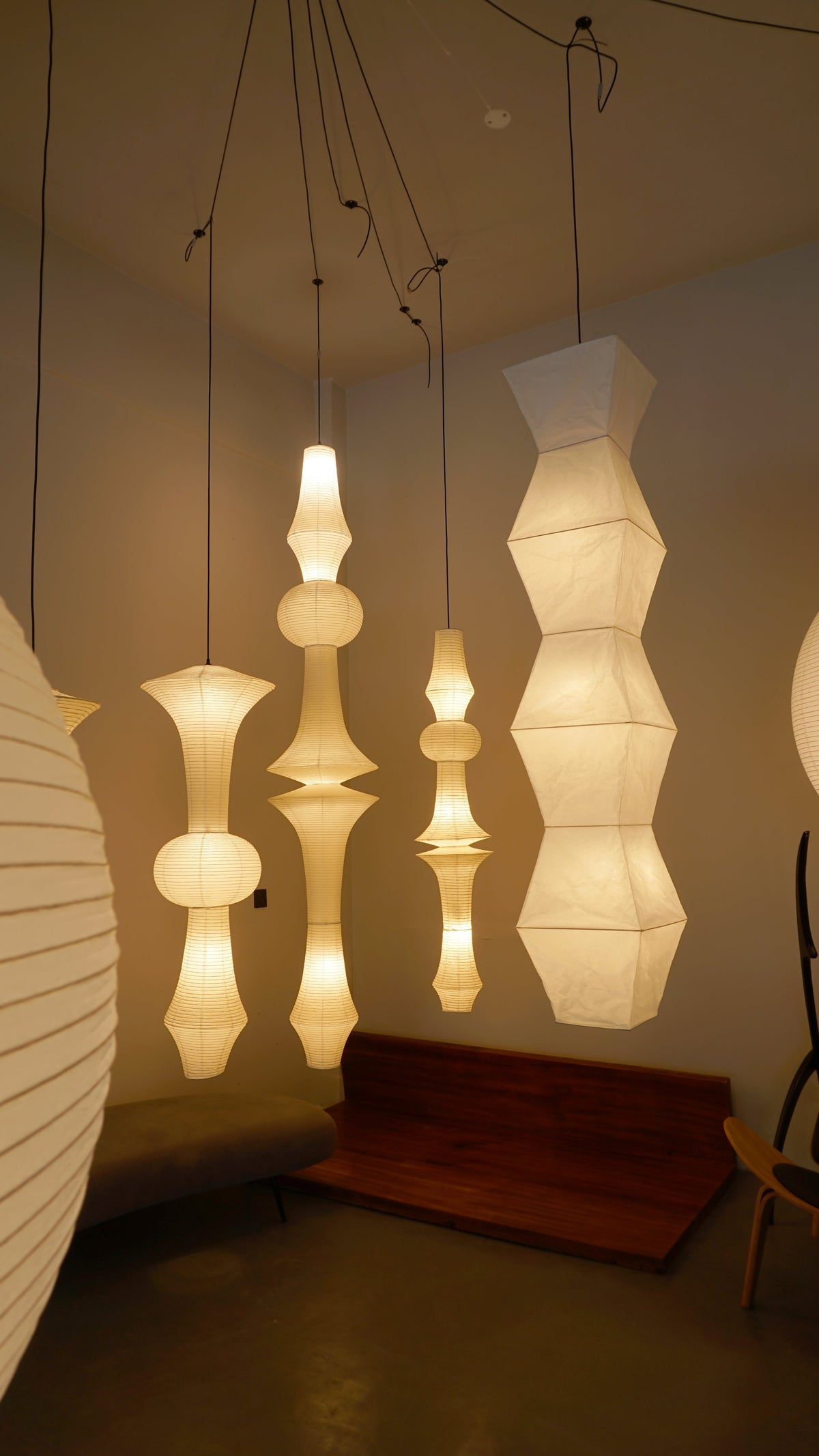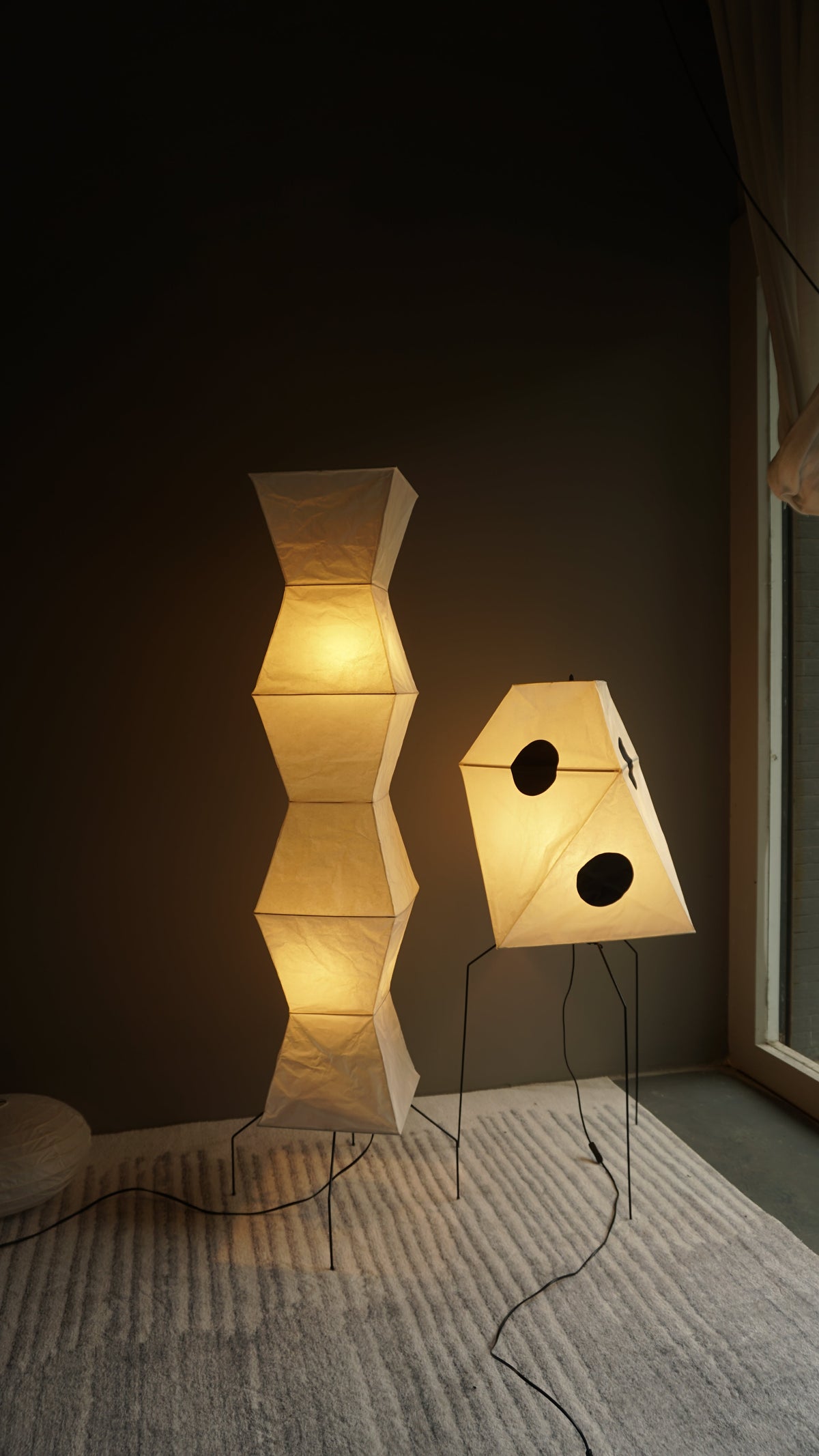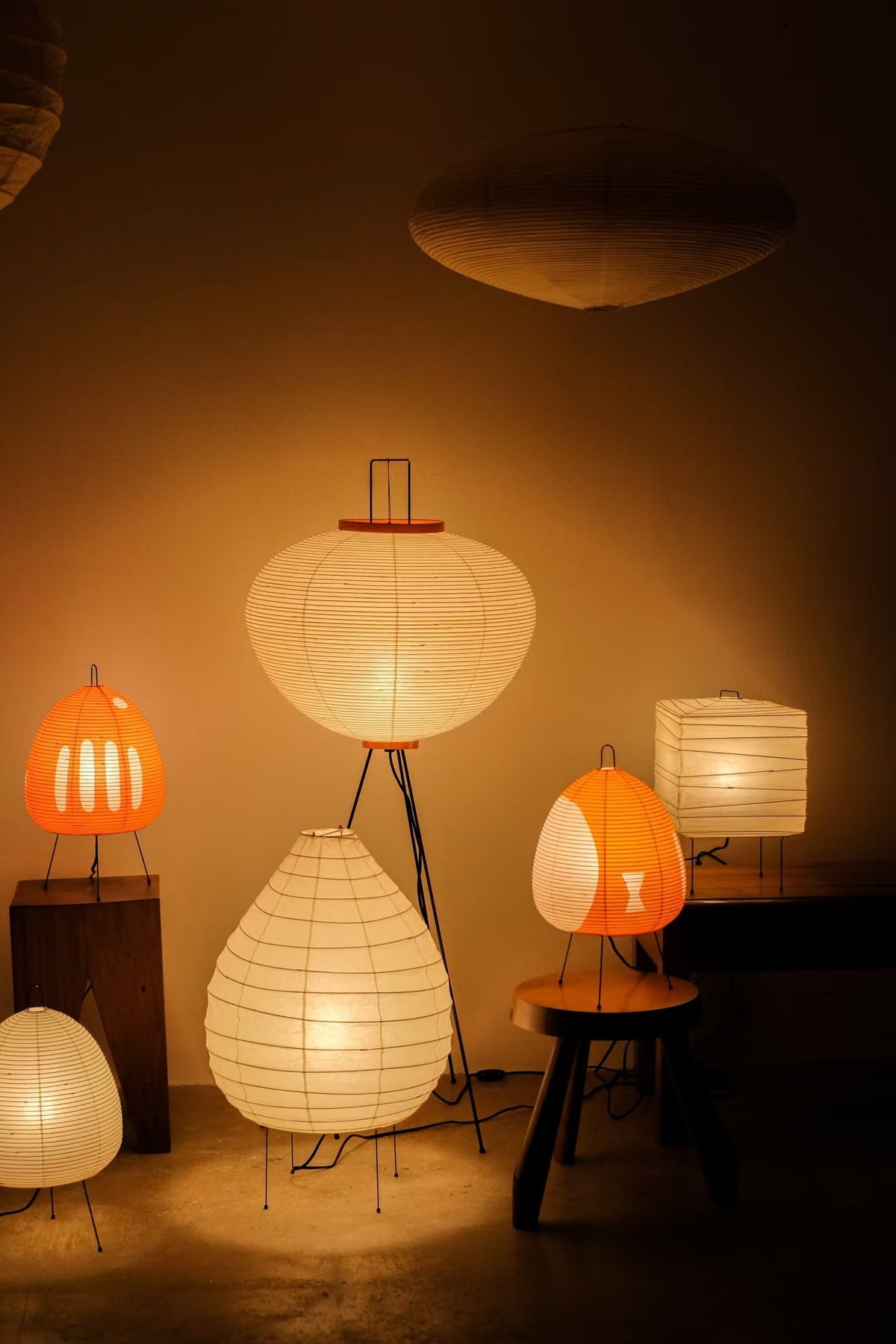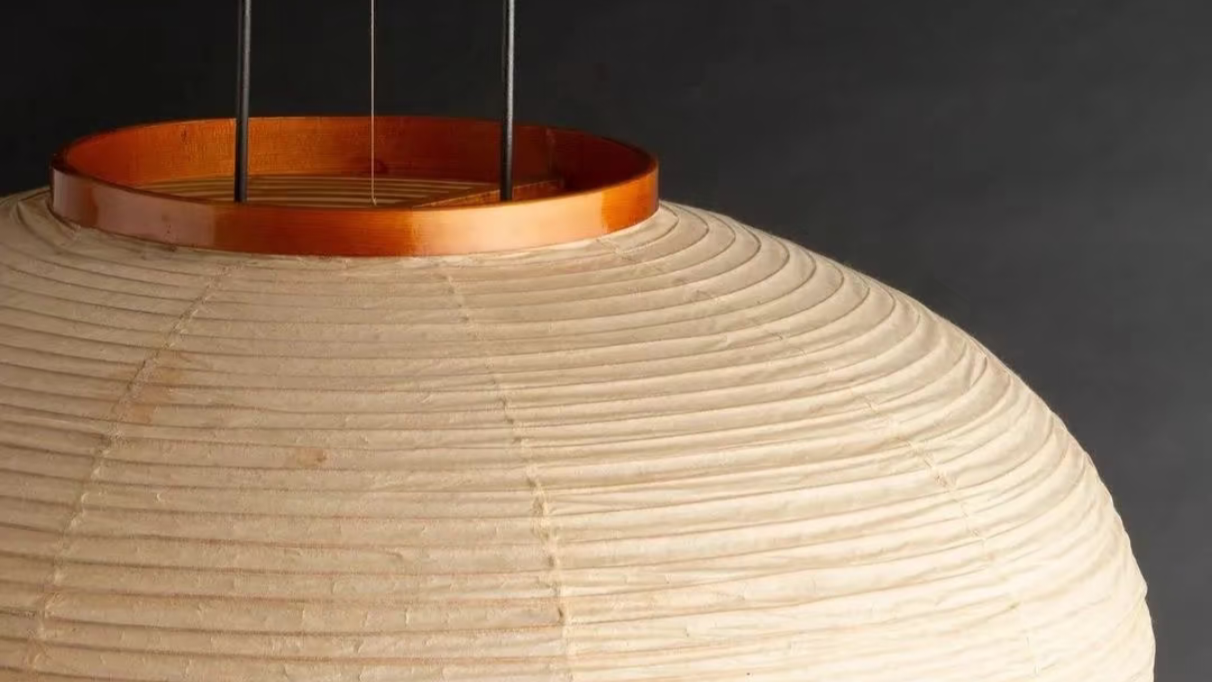A quick scene
Imagine stepping into a museum café where the ceiling is punctuated with soft, paper globes: warm amber light washes over a communal wooden table, faces glow gently, and conversation settles into a relaxed cadence. That’s Kafeteria at SMK — a place where food, art and light meet. The café’s interior deliberately suspends Akari light sculptures, giving the room a calm, inviting presence that feels like an artwork you can sit in. SMKRemodelista
Why Akari (and Noguchi-style lamps) feel so right in a café
Akari lamps — whether classic Akari A, the pendant D series, the sculptural F forms, the vertical N range, or the playful X shapes — are more than pretty fixtures. They are light sculptures: thin bamboo or metal ribs, backed by washi paper, that turn a bulb into a soft, living glow. That glow has three practical effects in hospitality spaces:
-
Soft, flattering light — Akari diffuses illumination across faces and surfaces, avoiding harsh glare (perfect for slow meals and lingering conversation). The Noguchi Museum
-
Visual calm — the simple forms read as sculptural objects rather than noisy décor; they let the food and art take center stage while the light supports the mood. Wallpaper*
-
Timelessness — Akari’s minimal geometry (A, N, X, etc.) is retro and modern at once; it ages quietly and never feels faddish. The Noguchi Museum
Kafeteria’s designer choices — from wooden tables to the suspended Noguchi lights — produce a Danish-influenced hygge that’s more about comfort and shared warmth than style posturing. The Spaces哥本哈根旅游
Kafeteria SMK: artful food under floating lights
Kafeteria is part of the National Gallery of Denmark’s café program; the space was realized by chef-curator Frederik Bille Brahe and artist-designer collaborators, and its interior intentionally brings together furniture, finishes and the Akari family to make dining feel like part of the museum experience. The café’s official site and press coverage note how Noguchi lights are suspended across the ceiling and how the interior reads as a living exhibition. SMKRemodelista
Official site: Kafeteria SMK — https://kafeteriasmk.dk/ (useful for event & opening info). Kafeteria SMK
What sets Akari apart from “other paper lamps”
There are many paper lanterns and mass-market copies out there — but the difference is in craft and intent:
-
Material choice: Authentic Akari-style lamps are made with washi-like paper (or the real thing) and carefully tensioned ribs that create even diffusion — not thin tissue that tears or lets bulbs show through. The Noguchi Museum
-
Sculptural shaping: Noguchi’s A, D, F, N and X families are designed as full forms (not simply shades). The internal framework is built to hold graceful curves that read as objects by day and lanterns by night. The Noguchi Museum
-
Provenance and care: Museums, designers and well-curated cafés choose Akari for its craft history and reliable, peaceful light. In hospitality contexts like Kafeteria, that consistency matters. The SpacesWallpaper*

How Kafeteria used Akari series to define zones
Kafeteria shows a smart way to use multiple Akari families together:
-
A series (large vertical forms) anchor taller spaces and hallways.

-
F series pendants create rhythmic overhead clusters above tables.

-
N and X series add smaller sculptural silhouettes that give scale variety.
Together they form layers of light that balance task needs (reading a menu) and atmosphere (soft background glow). You can spot this layered strategy in press photos and the café’s imagery. RemodelistaWallpaper*
Bring Kafeteria’s hygge home — practical tips
Want that floating-Akari feeling at home? Try these easy moves:
-
Choose scale thoughtfully. A long table can take a run of D-series pendants; corners prefer a tall floor-style N form. (When you search for models, look up tags like A-series, D-series, N and X for proportion ideas.)
-
Use warm LEDs (2700K–3000K) to preserve the amber, cozy glow.
-
Layer light. Combine an Akari pendant with a small table Akari (e.g., a 24N table lamp) to create depth and the exact comfy hygge vibe you want.
-
Mind materials. Invest in washi-style shades and solid frames — it’s what turns a cheap lantern into a living light.
See it in person (and why that matters)
If you’re traveling to Copenhagen, Kafeteria is a model case for how light, food and museum programming can be woven together. Visit the café page or the National Gallery’s SMK site for hours, menus and events. Linking to Kafeteria’s official page helps readers learn more and gives a credible external pointer for anyone researching Akari installations. Kafeteria SMKSMK
A note about authenticity & sourcing
If you’re curious about original Akari pieces (the Noguchi series made in Gifu), museum shops and the Noguchi Shop explain how these lights are handmade with washi and bamboo ribs; that provenance is part of their appeal. For home use, many designers select high-quality Akari-style lamps that honour that craft while fitting modern budgets and logistics. For historical context and production details, the Noguchi Shop is a reliable source. The Noguchi Museum
Links & citations (selected)
-
Kafeteria at SMK — official café page. Kafeteria SMK
-
Kafeteria press coverage (design & Noguchi lights) — Remodelista / The Spaces / Wallpaper feature. RemodelistaThe SpacesWallpaper*
-
Noguchi Akari background & craftsmanship — Noguchi Shop. The Noguchi Museum
Final thought
Kafeteria SMK shows how a few carefully chosen Akari family members — A, D, F, N and X — can transform an everyday café into a place that feels like a living exhibition of light. The result is pure hygge: gentle warmth, shared comfort, and a visual calm that invites you to linger. If that feeling appeals, bringing an Akari lamp(Noguchi Akari Paper Lamp in Kafeteria SMK) into your own dining nook or living room is one of the most quietly powerful design moves you can make.
MY WEBSITE :HTTP://CAPTAINSBAMBOO.COM




0 Kommentare